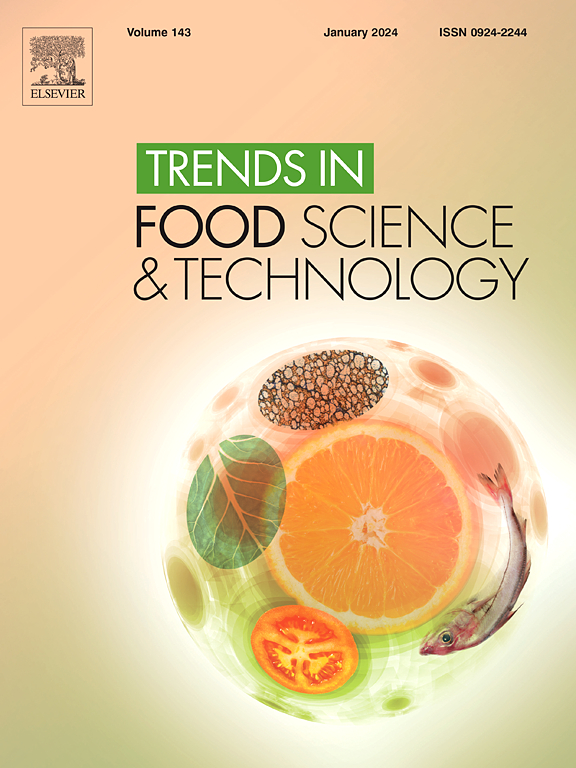Evaluating the effects of intrinsic and isolated arabinoxylans on human gut microbiota and short-chain fatty acids: A systematic review and meta-analysis
IF 15.1
1区 农林科学
Q1 FOOD SCIENCE & TECHNOLOGY
引用次数: 0
Abstract
Background & objective
Dietary fibers can alter the gut microbiota that is linked to the host health, however, the human intervention results showed varying degrees of prebiotic efficacy and the reasons are unclear. This study appraises literature to provide an overview of the complex regulatory mechanisms of intrinsic arabinoxylans-rich foods and isolated arabinoxylans in their interactions with the gut microbiota. The Embase, Scopus, PubMed, and Web of Science databases were searched up to Oct 31, 2023. The GRADE was used to assess evidence quality.
Key findings
A total of 34 human interventional studies involving 1324 participants were included. The isolated arabinoxylans manipulated gut microbiota abundance more selectively than intrinsic arabinoxylans, thereby reducing microbial diversity (SMD: −0.55, 95% CI: −0.94, −0.15) and promoting Bifidobacterium abundance (SMD: 0.32, 95% CI: 0.11, 0.54). The longer-chain arabinoxylans with the high-dose (≥10 g/day) enhanced the production of fecal propionate (SMD: 0.62, 95% CI: 0.04, 1.21), whereas the shorter-chain arabinoxylan-oligosaccharides (≥10 g/day) reduced isobutyrate (SMD: −1.67, 95% CI: −2.34, −1.01) and isovalerate (SMD: −1.29, 95% CI: −1.92, −0.67). The intrinsic arabinoxylans showed greater efficacy in increasing acetate (SMD: 0.51, 95% CI: 0.19, 0.82) and butyrate levels (SMD: 0.34, 95% CI: 0.03, 0.66).
Conclusion
The regulatory effects of arabinoxylans on the gut microbiota, and especially short-chain fatty acids production, depended on their discrete structures, intrinsic properties, and dosages. It highlights a better defining the role of dietary fibers for precise use in manipulations of the human gut microbiota and their metabolic functions relevant to health.
求助全文
约1分钟内获得全文
求助全文
来源期刊

Trends in Food Science & Technology
工程技术-食品科技
CiteScore
32.50
自引率
2.60%
发文量
322
审稿时长
37 days
期刊介绍:
Trends in Food Science & Technology is a prestigious international journal that specializes in peer-reviewed articles covering the latest advancements in technology, food science, and human nutrition. It serves as a bridge between specialized primary journals and general trade magazines, providing readable and scientifically rigorous reviews and commentaries on current research developments and their potential applications in the food industry.
Unlike traditional journals, Trends in Food Science & Technology does not publish original research papers. Instead, it focuses on critical and comprehensive reviews to offer valuable insights for professionals in the field. By bringing together cutting-edge research and industry applications, this journal plays a vital role in disseminating knowledge and facilitating advancements in the food science and technology sector.
 求助内容:
求助内容: 应助结果提醒方式:
应助结果提醒方式:


